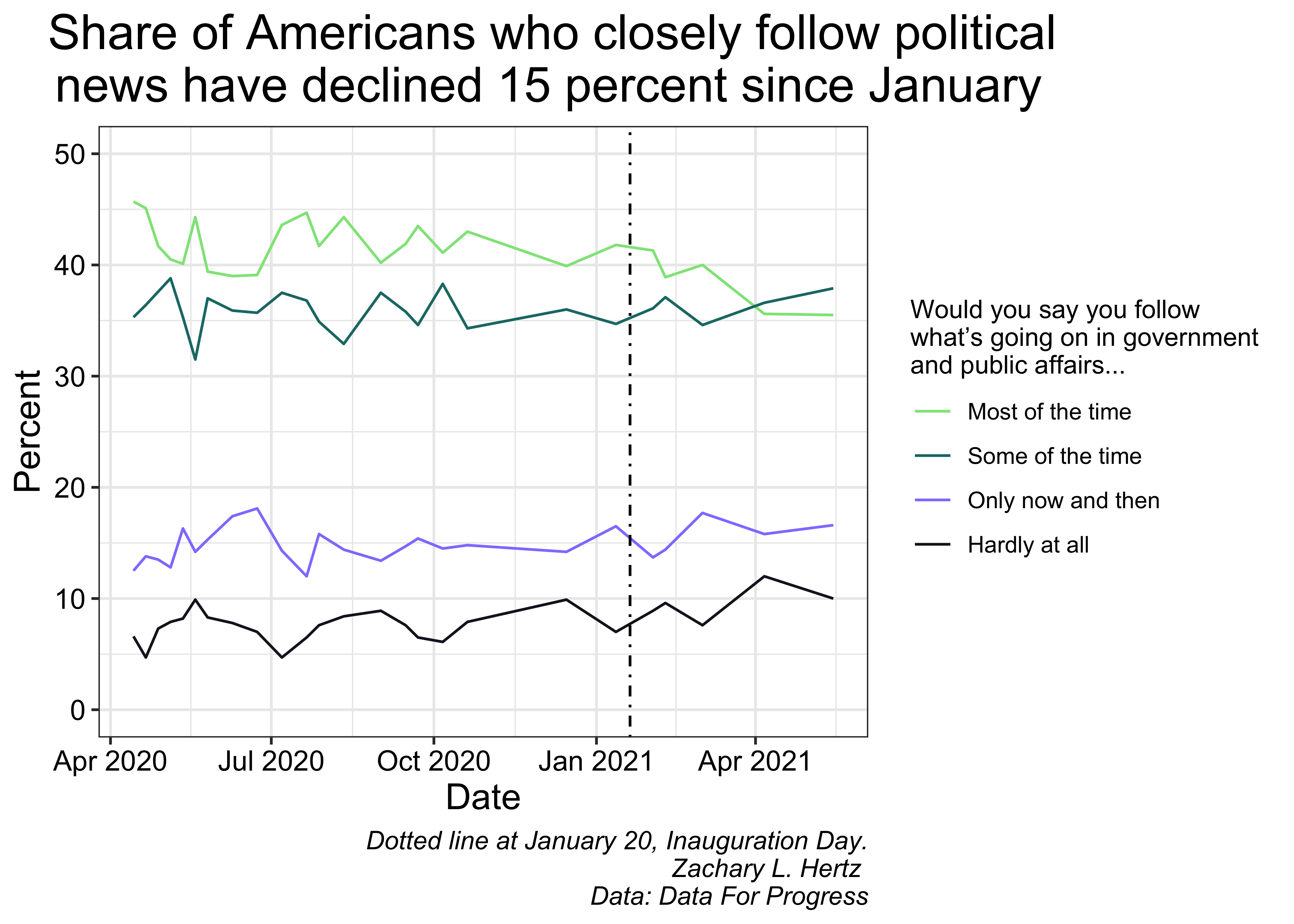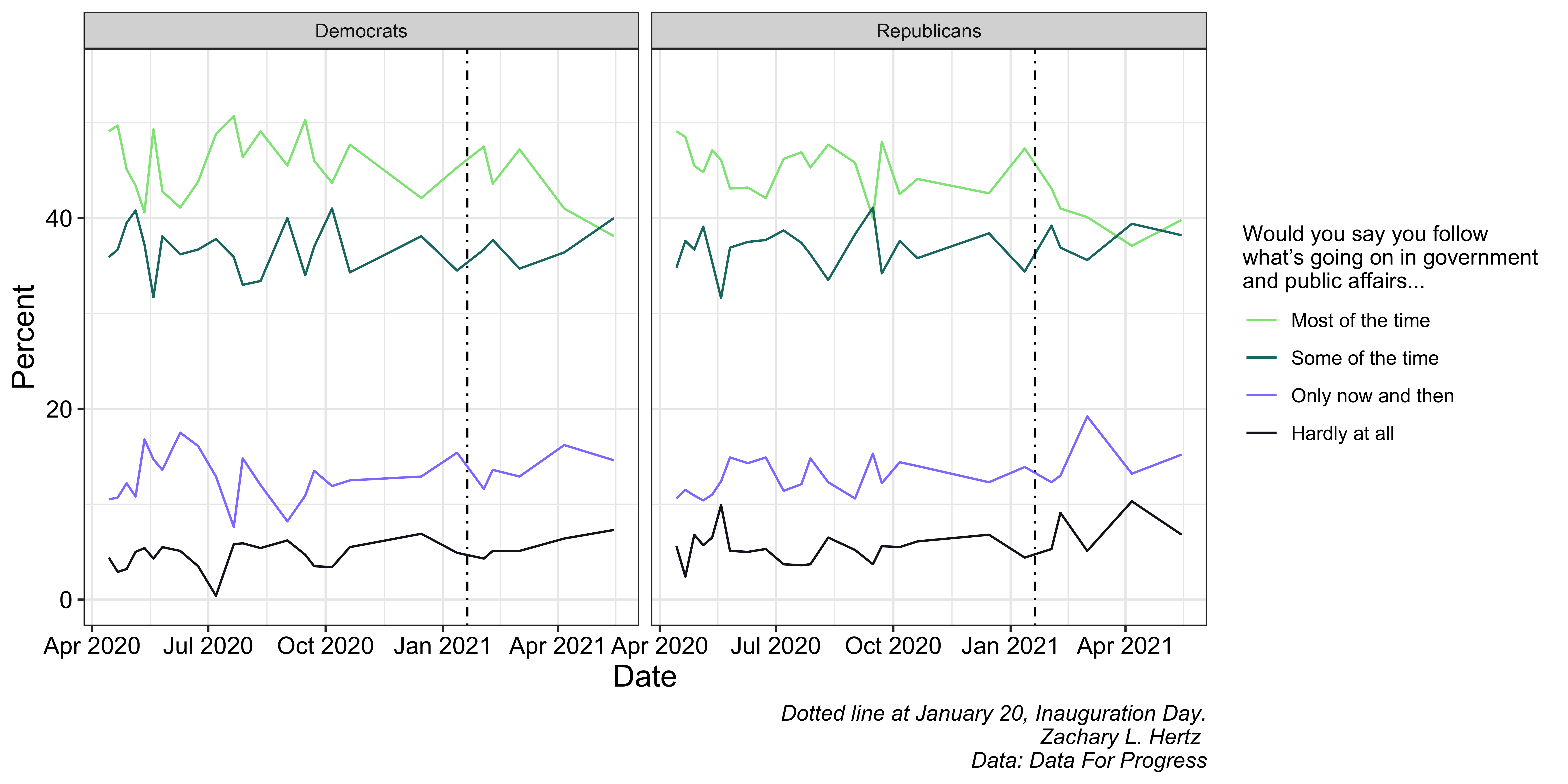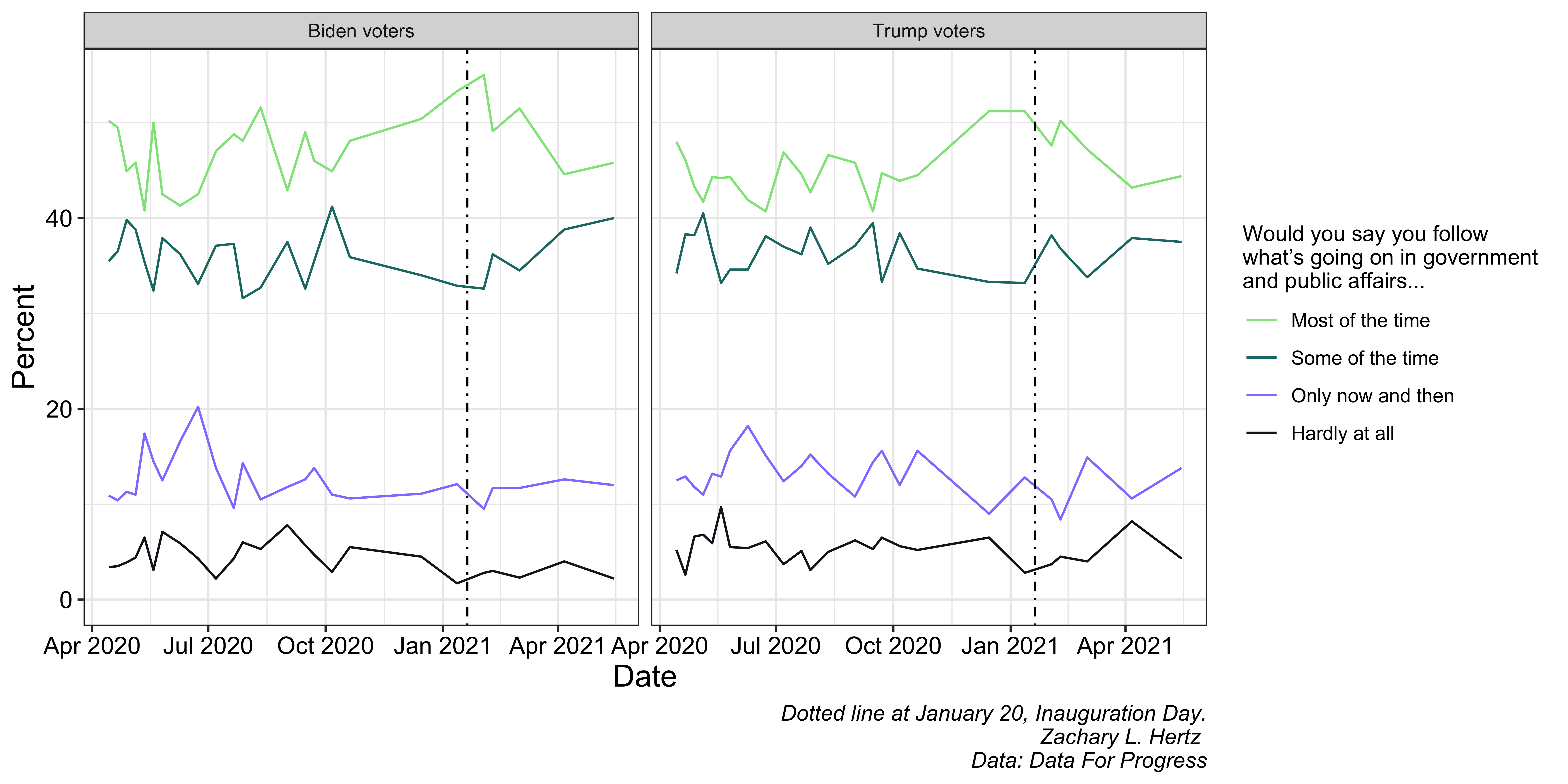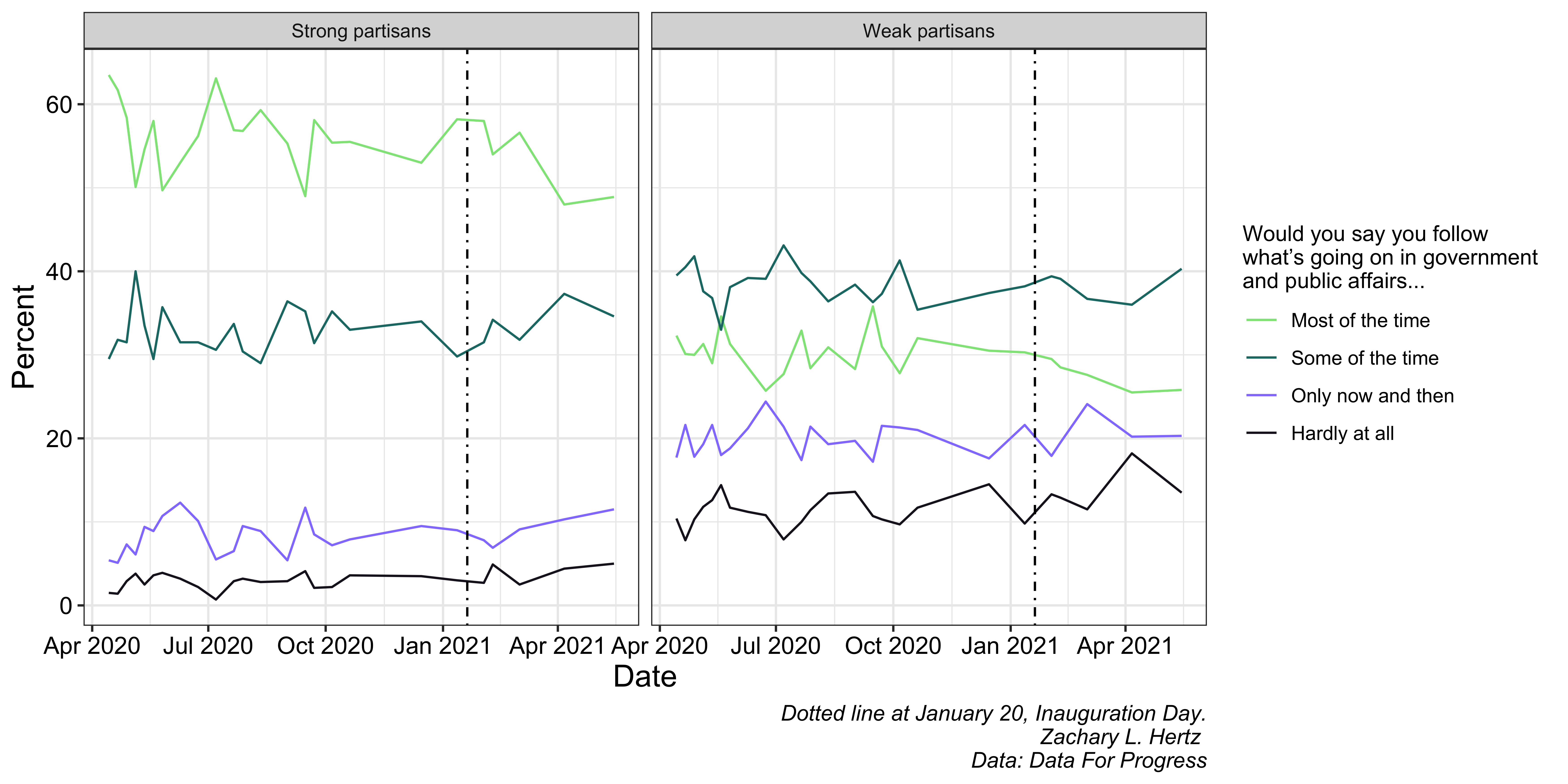Tracking the Drop in News Interest
Data shows a decline in news interest is consistent across party lines, not partisan
As cable news viewership dropped over the first half of 2021, political commentators were quick to attribute this drop in news interest to the Biden administration. But the first half of 2021 has also seen the Covid-19 pandemic – one of the largest news stories in 2020 – rapidly drop in salience since January thanks to falling infection rates and the largely successful vaccine rollout. As a result, it remains difficult to determine what role the Biden administration and the decreased need to closely follow the pandemic have played as potential drivers of the drop in news interest. I used the Data for Progress Covid-19 Tracking Poll to investigate.
News source consumption patterns mirror overall engagement trends
Beyond general political interest, the survey also tracked specific news source consumption, asking respondents whether they got news from various outlets in the past week. The results show broad declines across multiple news sources after January 2021.
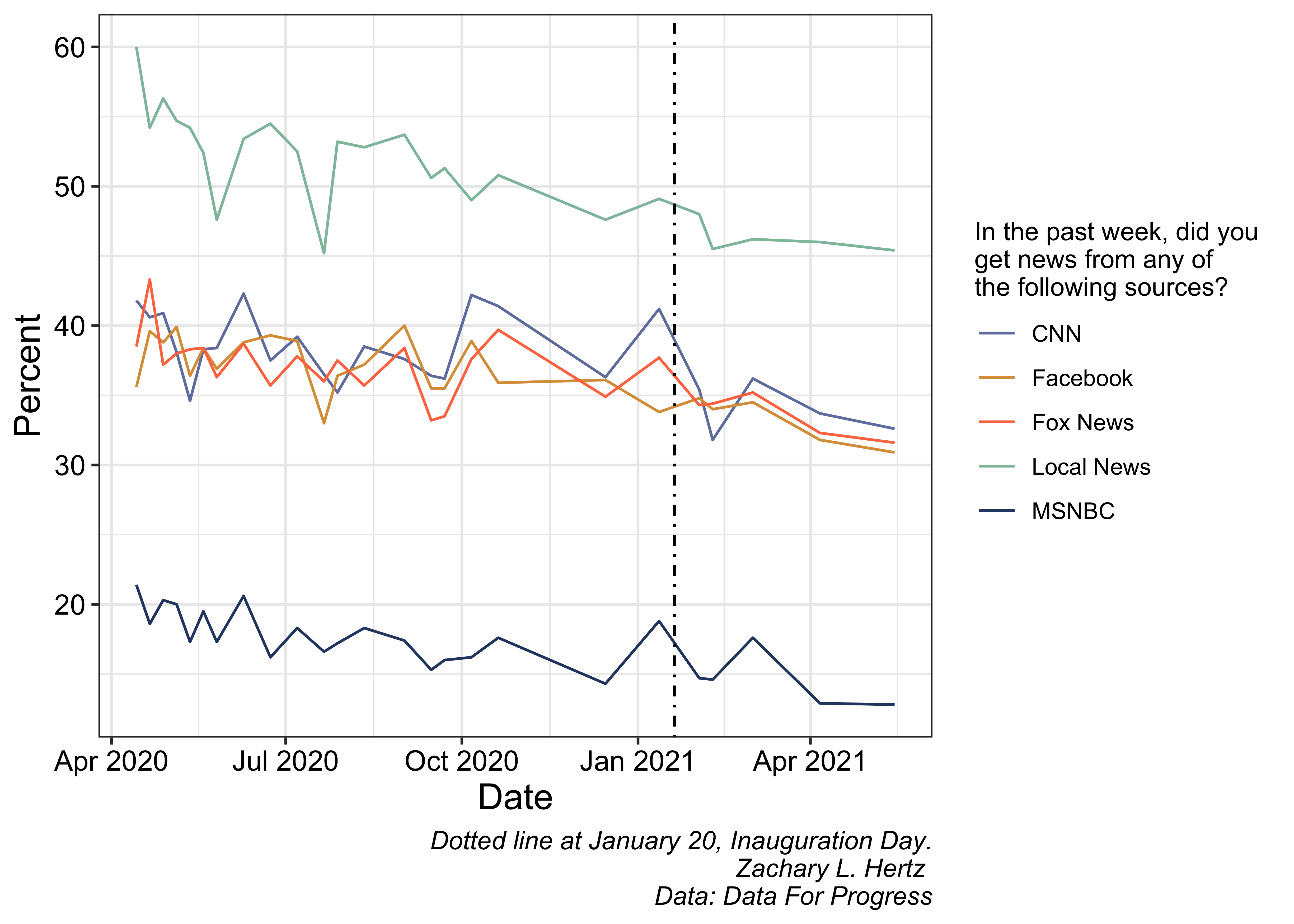
Local news consumption shows the steepest decline, falling from around 60 percent in early 2020 to below 50 percent by early 2021, and continuing to decline through May. Cable news networks (CNN, Fox News, MSNBC) all experienced similar patterns, with viewership peaking during the election period and dropping significantly after inauguration. Even social media news consumption through Facebook declined notably.
When broken down by partisan strength, the patterns remain consistent across both strong and weak partisans, suggesting that the decline in news source consumption is not primarily driven by partisan disengagement.
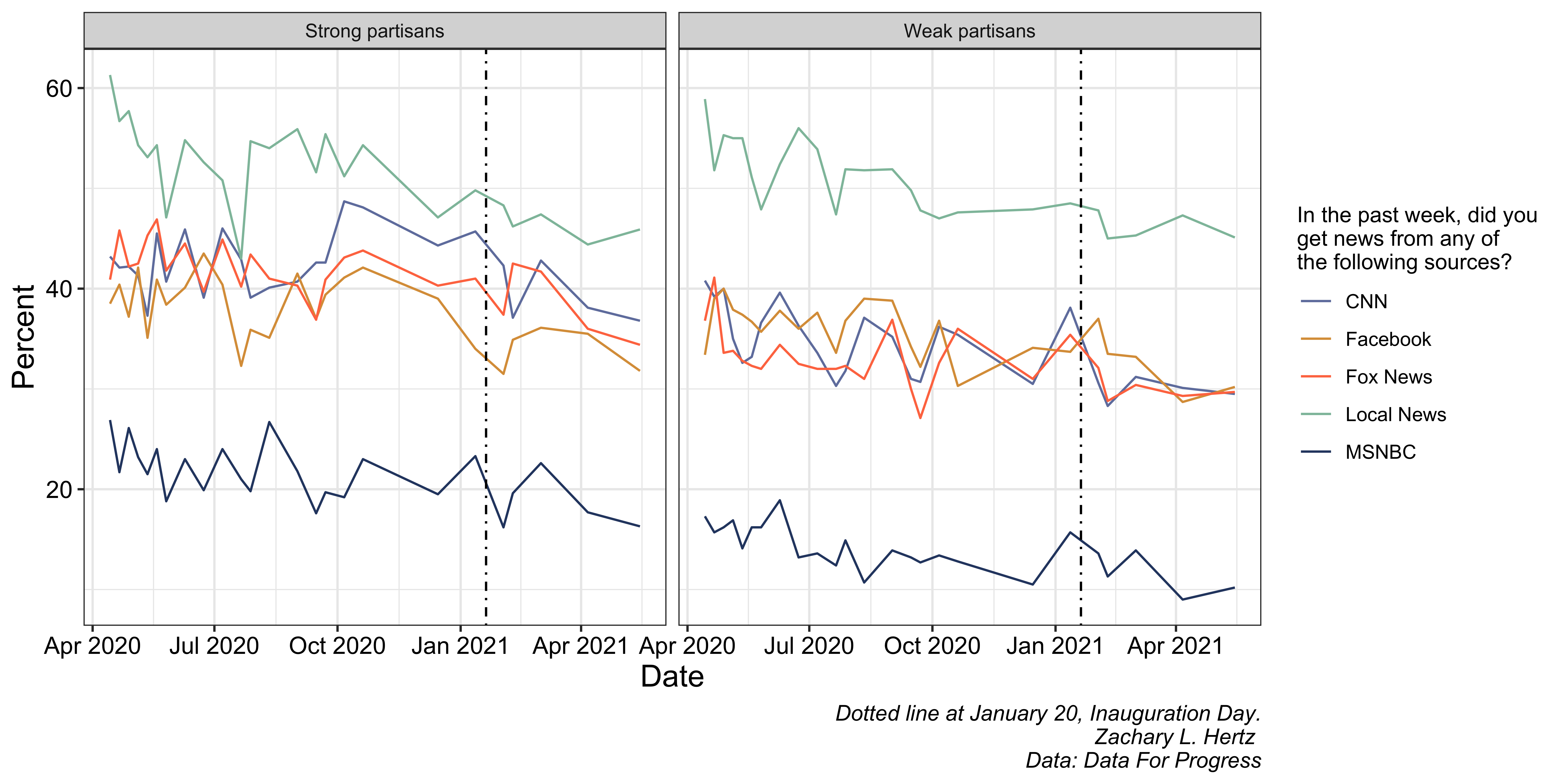
Similarly, examining news consumption by party identification and presidential vote choice reveals parallel declines across different political groups, reinforcing the finding that this trend transcends partisan divides.
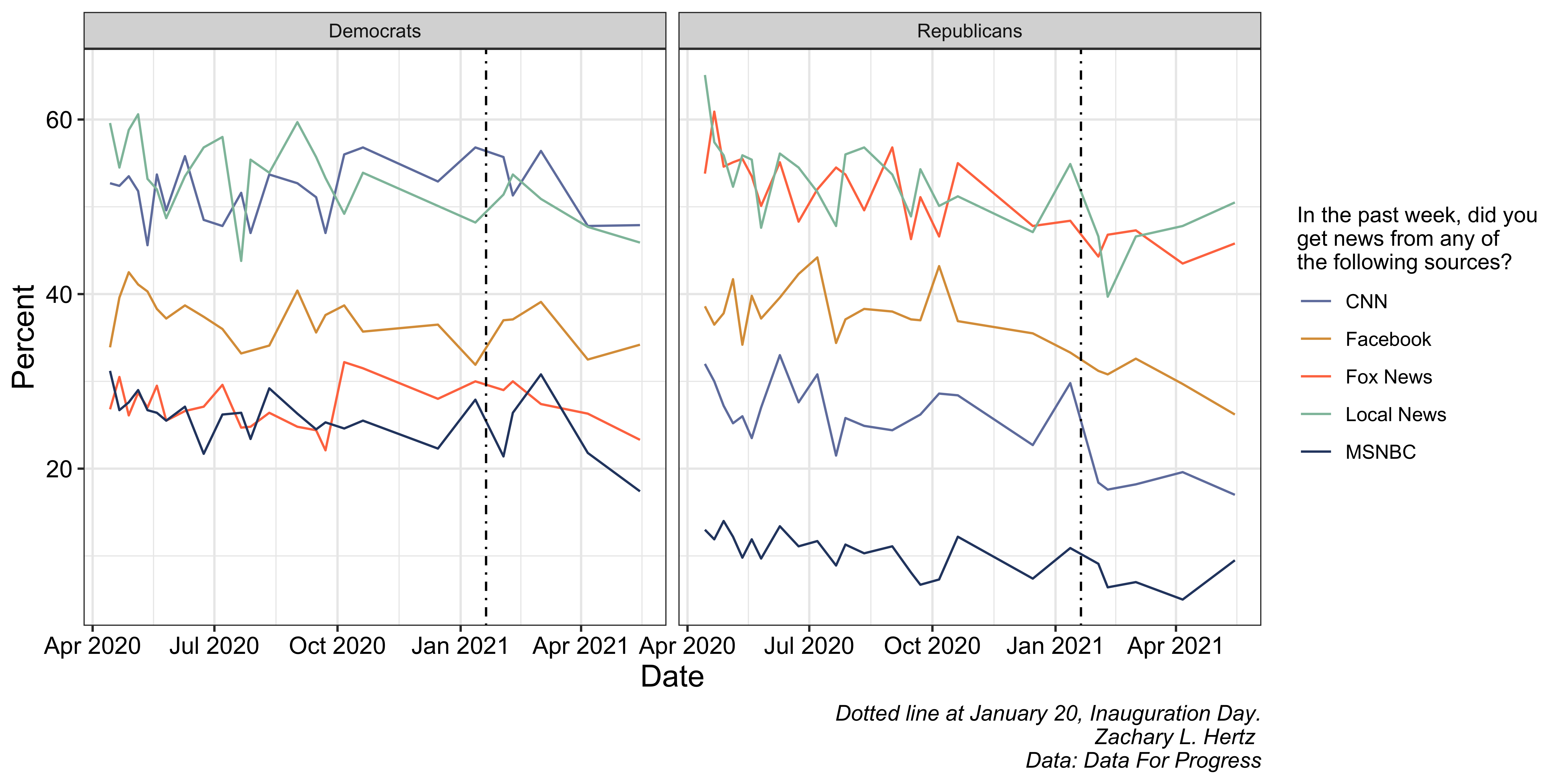
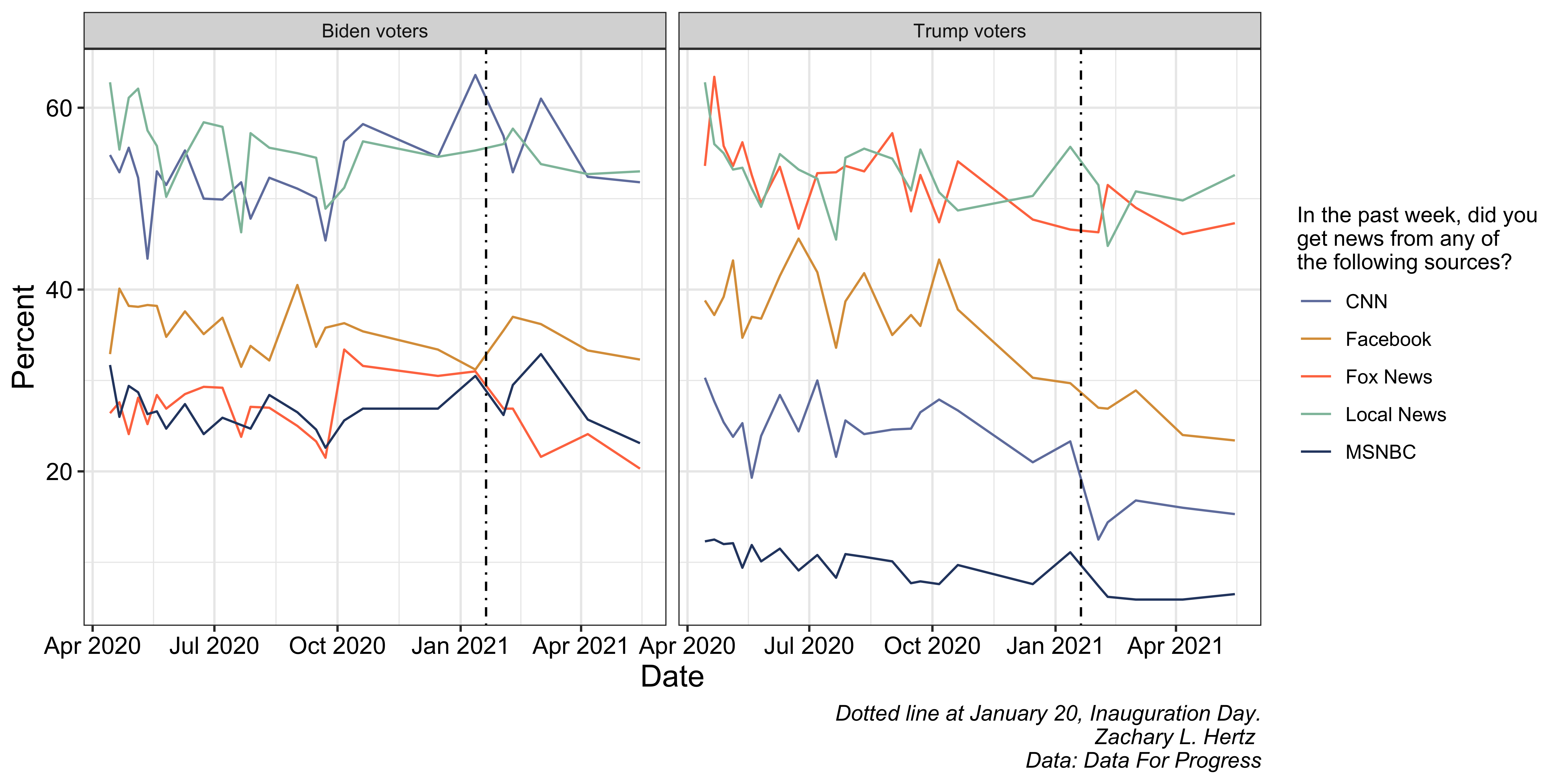
Conclusion
The evidence strongly suggests that the decline in political news interest during the first half of 2021 was not primarily driven by partisan reactions to the Biden administration. Instead, the data points to a broader, non-partisan phenomenon affecting Americans across the political spectrum.
Several key findings support this conclusion. The 15 percent decline in high-level political engagement was remarkably consistent across party lines, voter preferences, and levels of partisan strength. Republicans and Democrats, Biden voters and Trump voters, strong partisans and weak partisans all experienced similar drops in their likelihood to follow politics “most of the time.” This consistency suggests a common cause rather than partisan-specific reactions.
The timing also supports a pandemic-related explanation. The decline began precisely as COVID-19 cases were falling and vaccine distribution was accelerating, reducing the urgency that had driven news consumption throughout 2020. The pandemic had created an environment where staying informed about government actions felt critically important for personal safety and decision-making. As that immediate threat receded, so did the intense need to follow political developments.
Additionally, the 2020 election cycle had created an unusually high-engagement period that was unlikely to be sustainable. The combination of a contentious presidential election, a global pandemic, and significant social unrest had elevated political news consumption to extraordinary levels. Some decline from this peak was probably inevitable regardless of which candidate won the presidency.
This analysis suggests that commentators may have been too quick to attribute declining news interest to Biden-specific factors. While presidential administrations certainly influence the political news environment, the data indicates that broader contextual factors—particularly the winding down of the pandemic emergency—played a more significant role in the 2021 decline in political engagement than partisan reactions to the change in administration.
Citation
@online{lorico_hertz2021,
author = {Lorico Hertz, Zachary},
title = {Tracking the {Drop} in {News} {Interest}},
date = {2021-07-13},
url = {https://zacharylhertz.github.io/posts/2021-07-13-news-interest/},
langid = {en}
}
